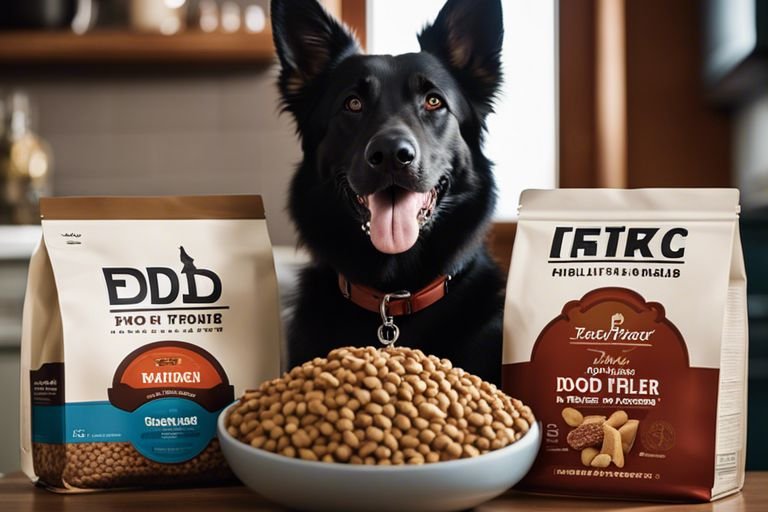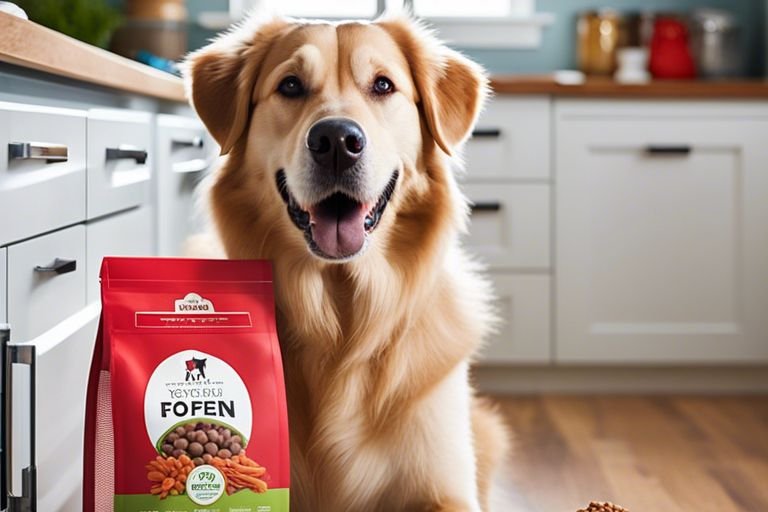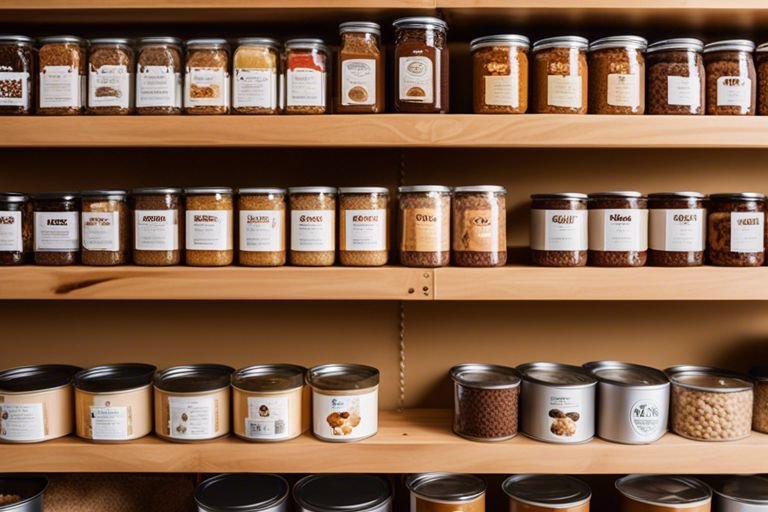How To Play Engaging Dog Training Games With Your Pup

This dog training games guide will show you how to have fun while training your canine companion with interactive games. By incorporating playtime into your training routine, you can strengthen your bond with your pup and reinforce positive behaviors. Whether you’re working on obedience, agility, or simply want to keep your dog mentally stimulated, these engaging games will make learning enjoyable for both you and your furry friend.
Key Takeaways:
- Build a strong bond: Engaging in dog training games with your pup can help strengthen the bond between you and your furry friend.
- Improve obedience: Through interactive games, you can reinforce training commands and improve your dog’s obedience skills.
- Physical exercise: Playing games with your dog is a fun way to provide physical exercise, keeping them healthy and active.
- Mental stimulation: Dog Training games challenge your pup mentally, providing mental stimulation and preventing boredom.
- Positive reinforcement: Using games to reward good behavior can be an effective form of positive reinforcement in dog training games.

Understanding Your Dog's Needs
The bond between you and your dog is a special one, and understanding your pup’s needs is necessary to building a strong relationship. By recognizing and catering to your dog’s specific traits, characteristics, learning style, and personality, you can tailor your dog training games to suit them best.
Identifying Breed-Specific Traits and Characteristics
Characteristics unique to your dog’s breed can play a significant role in how they behave and learn. For example, herding breeds may have a strong instinct to chase and control movement, while retrievers may have a natural desire to fetch and carry objects. Understanding these traits can help you create games that cater to your dog’s innate tendencies, making training more enjoyable and effective for both of you.
Recognizing Your Dog's Learning Style and Personality
Even within the same breed, individual dogs can have different learning styles and personalities. Some dogs may be highly food motivated, while others may be more interested in play or praise. By observing how your dog responds to different stimuli, you can tailor your training games to suit their preferences. For example, if your dog is more play-oriented, incorporating toys into your training sessions can make learning more engaging for them.
Traits such as curiosity, shyness, or boldness can also play a role in how your dog approaches training games. By recognizing and respecting your dog’s unique personality traits, you can create a training environment that makes them feel comfortable and confident, ultimately leading to more successful training sessions.
Choosing the Right Games for Your Pup
Factors to Consider When Selecting a Game
Little Fido loves to play and engage with you, but you want to make sure you’re choosing the right games that will benefit both of you. Factors to consider when selecting a game for your pup include their energy level, age, and physical abilities. You want to pick games that are appropriate for your pup’s stage of development and fitness level to ensure they enjoy the activity and don’t get frustrated. Keep in mind your pup’s personality and what they find most enjoyable, whether it’s running, fetching, problem-solving, or social interaction, and tailor your game choices to suit their preferences.
- Consider your pup’s energy level, age, and physical abilities.
- Choose games appropriate for your pup’s stage of development and fitness level.
- Take into account your pup’s personality and preferences.
Perceiving your pup’s individual traits and characteristics will help you select games that provide mental stimulation, physical exercise, and bonding opportunities between you and your furry friend.
Top 5 Engaging Dog Training Games for Beginners
There’s nothing quite like the joy of playing games with your pup, especially when it comes to keeping them mentally and physically active. If you’re new to dog training games, here are the top 5 engaging activities you can start with: tug of war, hide and seek, fetch, puzzle toys, and agility courses. These games are not only fun and entertaining for your pup, but they also provide excellent ways to teach them new skills and reinforce obedience commands in a positive and rewarding manner.
Right from the beginning, you want to introduce your pup to enjoyable and stimulating games that build their confidence, strengthen the bond between you, and set a solid foundation for further training. These beginner-friendly games are designed to make learning fun and exciting for your pup, setting the stage for a lifetime of interactive play and training experiences.

Preparing for a Fun and Effective Training Session
Tips for Setting Up a Successful Training Environment
Many factors contribute to a successful dog training games session, and one of the most important is setting up the right environment. Make sure the training area is free from distractions to help your pup stay focused. Choose a quiet space where you and your dog can work together without interruptions.
- Clear the training space of any toys or objects that could distract your dog.
- Use high-value treats to maintain your pup’s interest and motivation during the training session.
After each session, remember to clean up the training area and put away any training equipment. This will help maintain a consistent environment for your pup each time you train.
How to Choose the Right Rewards and Motivators
Choose rewards and motivators that your dog finds most appealing to increase their engagement and enthusiasm during training games sessions. Rewards can include treats, toys, or verbal praise, so it’s crucial to experiment and see what works best for your pup.
Successful training relies on consistent and timely rewards. Be sure to deliver rewards promptly after your dog performs the desired behavior to reinforce their actions effectively.
Basic Obedience Commands: Laying the Foundation
Despite being playful and fun, incorporating basic obedience commands into your dog training games is necessary. Teaching your pup commands like sit, stay, and come not only helps in their behavior management but also creates a strong foundation for more advanced training exercises.
How to Teach Your Dog to Sit, Stay, and Come
Your dog can easily learn the basic commands of sit, stay, and come through positive reinforcement. To teach your pup to sit, hold a treat close to their nose and slowly move your hand up while saying the word “sit.” Once their bottom touches the ground, reward them with the treat and positive praise. For stay, ask your dog to sit, then show your palm to them and say “stay.” Take a few steps back and reward them if they stay in place. Lastly, teaching your dog to come is crucial for their safety. Use a happy tone and encourage them to come to you, rewarding them when they do.
Common Mistakes to Avoid When Teaching Basic Commands
Clearly communicating with your dog is key when teaching them basic commands. One common mistake is using negative reinforcement or punishment, which can confuse and scare your pup. Instead, focus on positive reinforcement like treats, toys, or verbal praise to encourage good behavior. Additionally, consistency is necessary. Stick to the same commands and reward system to avoid confusion and ensure your dog understands what is expected of them.
Commands like sit, stay, and come are the building blocks of effective communication between you and your pup. By establishing a strong foundation with these basic obedience commands, you are setting the stage for a well-behaved and responsive furry companion.

Advanced Training Games for Mental and Physical Stimulation
Unlike basic training games, advanced games provide a higher level of mental and physical stimulation for your dog. They challenge your pup in unique ways and keep them engaged and entertained. Here are some advanced training games you can try with your furry friend:
- How to Play Hide-and-Seek and Scent Work with Your Dog
While playing hide-and-seek with your dog, start by having them stay in one place while you hide. This game helps them work on their impulse control and focus as they try to find you. You can also incorporate scent work by using their favorite toy or treat as a clue to help them track you down. | During scent work, hide treats around the house or yard for your dog to find using their sense of smell. This game engages their natural instincts and provides mental stimulation as they search for the hidden treasures. It’s a fun way to keep them entertained and mentally sharp. |
Tips for Creating a Fun and Challenging Obstacle Course
While setting up an obstacle course for your dog, think about including a variety of challenges such as tunnels, jumps, weave poles, and balance beams. This will test your dog’s agility and coordination while keeping them physically active and mentally stimulated. You can use household items creatively to design the course and make it fun and engaging for your pup.
- This will encourage problem-solving skills and boost their confidence as they navigate through the obstacles.
Clearly, creating an obstacle course requires some planning and creativity, but the benefits for your dog are well worth the effort. It’s a great way to bond with your pet while providing them with a stimulating and rewarding activity.
- This game also helps in building a stronger bond between you and your dog, as you work together to overcome challenges and obstacles.
For instance, you can time your dog as they complete the course and try to beat their own record each time. This adds an element of competition and motivation for both you and your furry friend, making the game even more enjoyable and exciting.

Overcoming Common Challenges and Setbacks
Factors That Can Affect Your Dog's Engagement and Focus
Keep in mind that just like humans, dogs can have off days or moments where they are less interested in training. Factors such as distractions in the environment, fatigue, hunger, or even health issues can affect your dog’s engagement and focus during training sessions.
- Ensure your training environment is free from distractions to help your dog focus better.
- Make sure your pup is well-rested and fed before training sessions.
- Consider any underlying health issues that might be impacting your dog’s ability to concentrate.
Though these challenges can be frustrating, it’s important to remain patient and understanding with your furry friend as you work through them.
How to Stay Patient and Motivated During Training
Dogs can sense your emotions, so staying calm and patient is key to a successful training session. Even if your pup is not picking up on a new trick as quickly as you’d like, remember that every dog learns at their own pace. Celebrate small victories and progress along the way to keep both you and your dog motivated.
Overcoming setbacks in training requires perseverance and a positive attitude. Remember to take breaks when needed and always end training sessions on a positive note. Your dog looks to you for guidance and reassurance, so staying patient and motivated will strengthen your bond and lead to successful training outcomes in the long run.
Final Words
Ultimately, playing engaging dog training games with your pup can be a fun and effective way to bond with your furry friend while teaching them new skills and behaviors. By incorporating games into your training routine, you can make learning more enjoyable for your dog and yourself.
Remember to be patient and consistent in your training efforts, and always reward your pup for their good behavior. With time and practice, you and your dog will have a blast playing games together while strengthening your relationship and creating a well-behaved and happy companion.
FAQ
Q: What are some benefits of playing dog training games with my pup?
A: Playing dog training games with your pup helps strengthen the bond between you and your furry friend, provides mental stimulation, improves obedience training, and promotes physical exercise.
Q: How do I choose the right dog training games for my pup?
A: When choosing dog training games, consider your pup’s interests, energy level, and current training goals. Games like hide-and-seek, fetch, and obstacle courses are popular choices for many dogs.
Q: How can I make dog training games more engaging for my pup?
A: To make dog training games more engaging, use high-value treats or toys as rewards, vary the games to keep them interesting, and keep training sessions short and positive to prevent boredom.
Q: Are there any safety tips I should keep in mind while playing dog training games?
A: Always supervise your pup during training games, use appropriate toys and equipment, avoid overexertion, and ensure the environment is safe and free of hazards.
Q: How can I measure the progress of my pup's training through games?
A: You can measure your pup’s progress by tracking their response to commands, observing their enthusiasm during training sessions, and noting any improvements in their behavior or obedience skills over time.




